Abstract
The effects of inflating a balloon introduced through a sigmoidoscope to 35 cm in the pelvic colon have been observed and compared in 67 patients with the irritable colon syndrome and in 16 normal and constipated subjects acting as controls.
Inflation to 60 ml caused pain in 6% of the controls at a mean diameter of 3·8 cm and in 55% of patients with the irritable colon syndrome (diameter 3·4 cm). An estimate of gut wall tension at this volume of inflation showed it to be normal in patients with the irritable colon syndrome; the incidence of pain in relation to wall tension was increased nearly tenfold in the irritable colon group.
Inflation of the balloon to different volumes was normally painless to a maximum acceptable diameter which remained constant for each study under constant conditions; continued inflation eventually gave rise to pain without increasing the diameter. The pain was felt in the hypogastrium in 40%, in one or both iliac fossae in 31%, and in the rectum in 21%; the other 8% felt pain in the back or elsewhere and there were no significant differences between clinical groups. Exceptionally, in 6% of the controls, and in 52% of patients with the irritable colon syndrome, pain occurred at balloon diameters that could still be increased by 10% or more with further inflation. This was probably the outcome of a low threshold for visceral pain in the section of bowel in contact with the balloon. Colonic hyperalgesia of this kind, possibly a random occurrence, may be an important contributory factor in the aetiology of the irritable colon syndrome.
Full text
PDF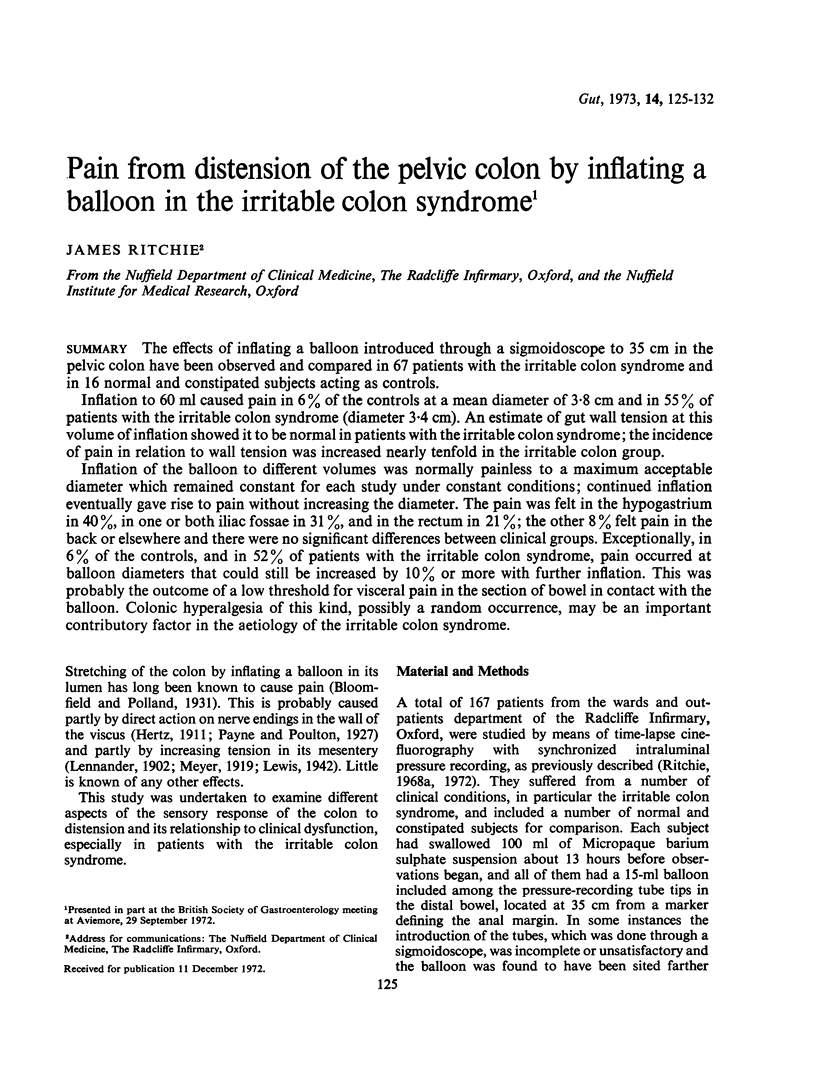
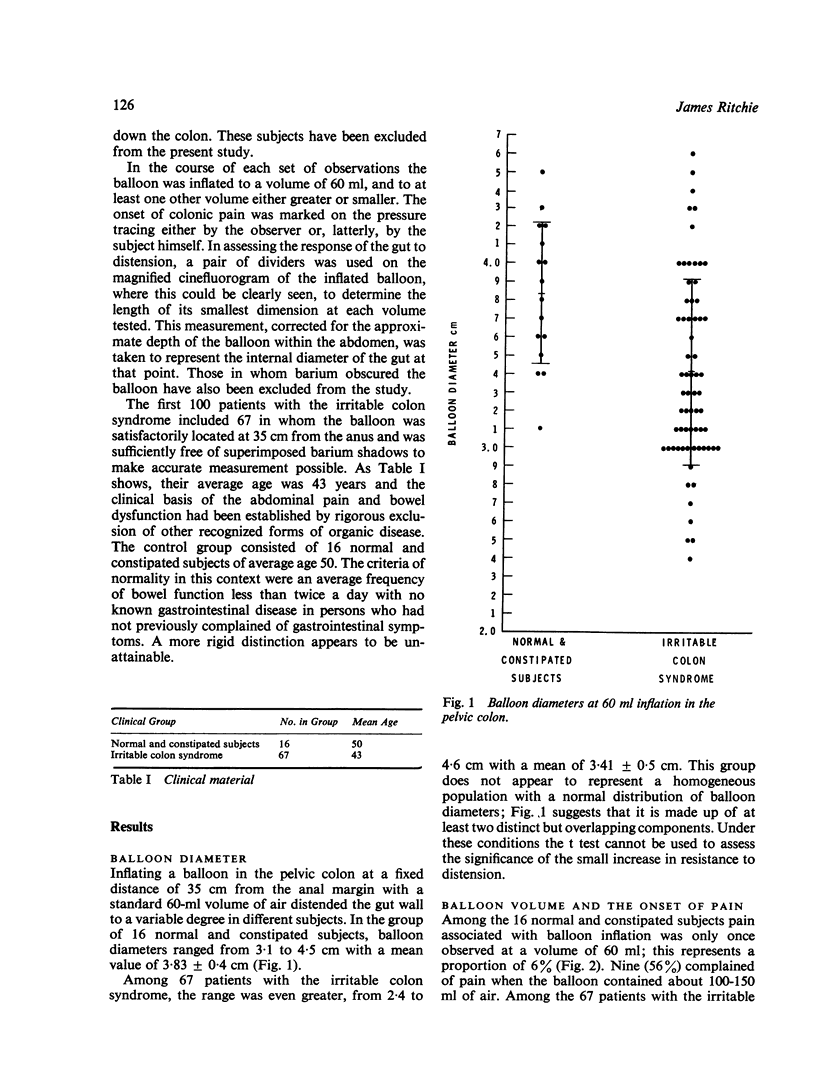
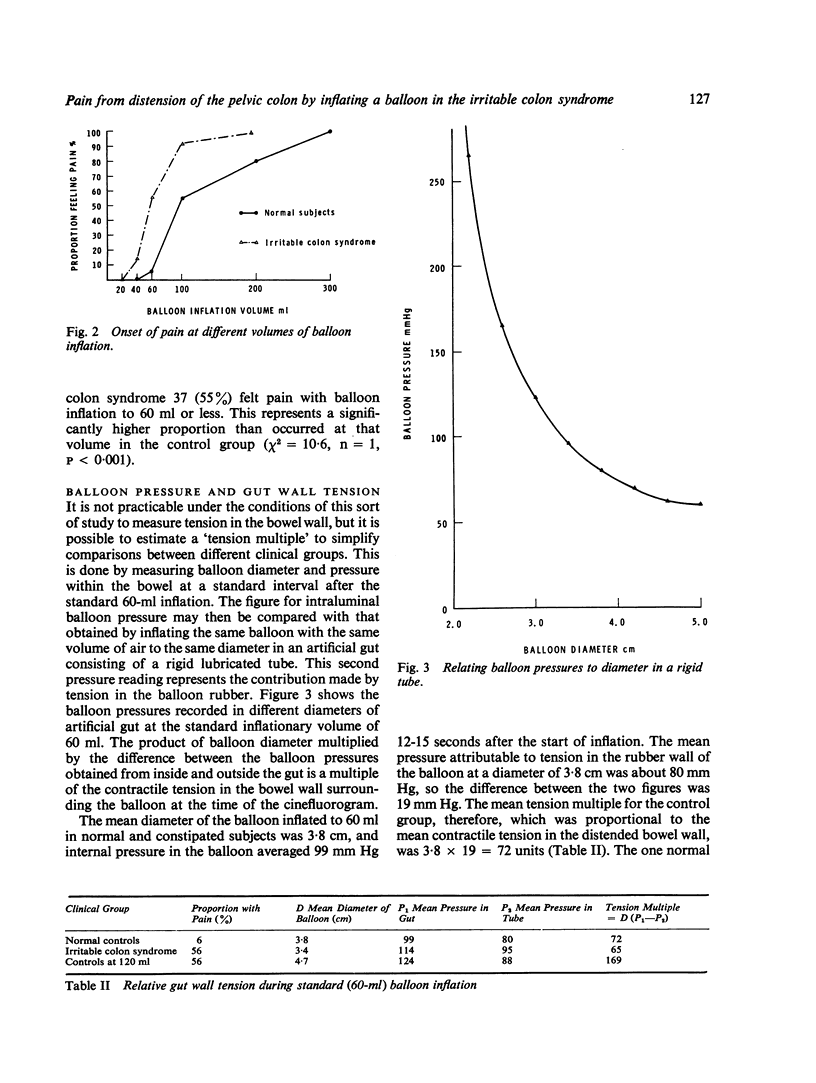
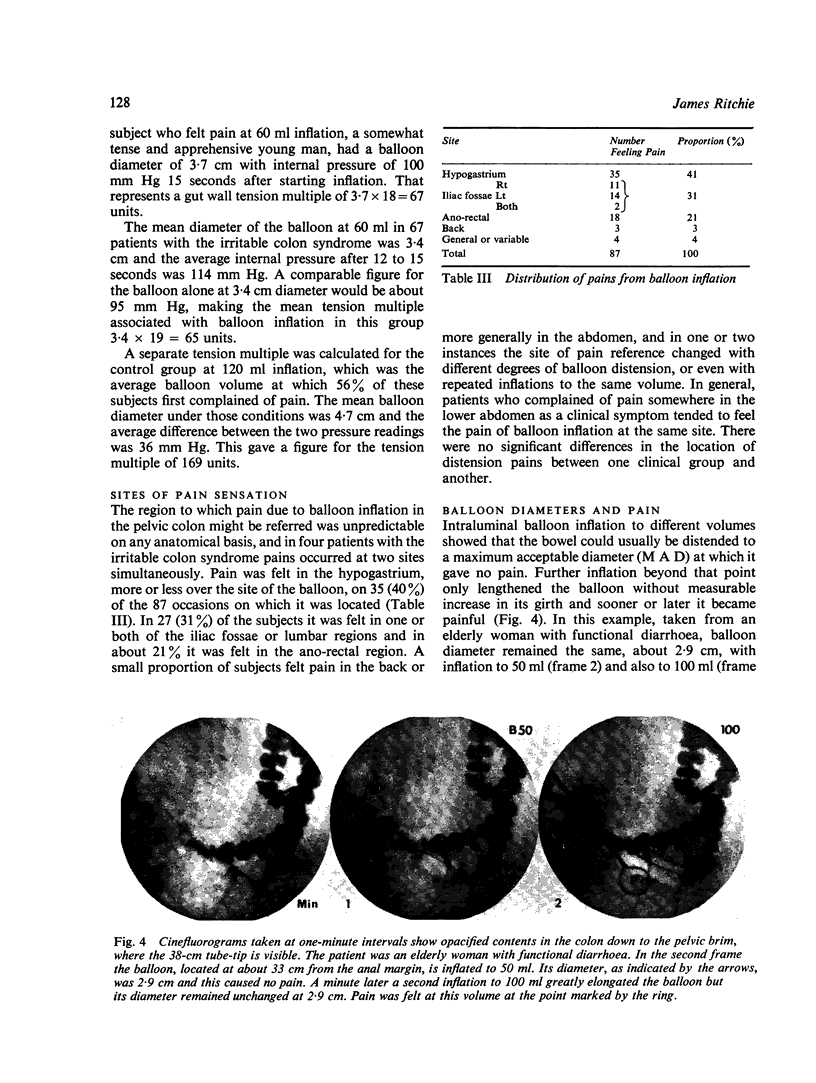
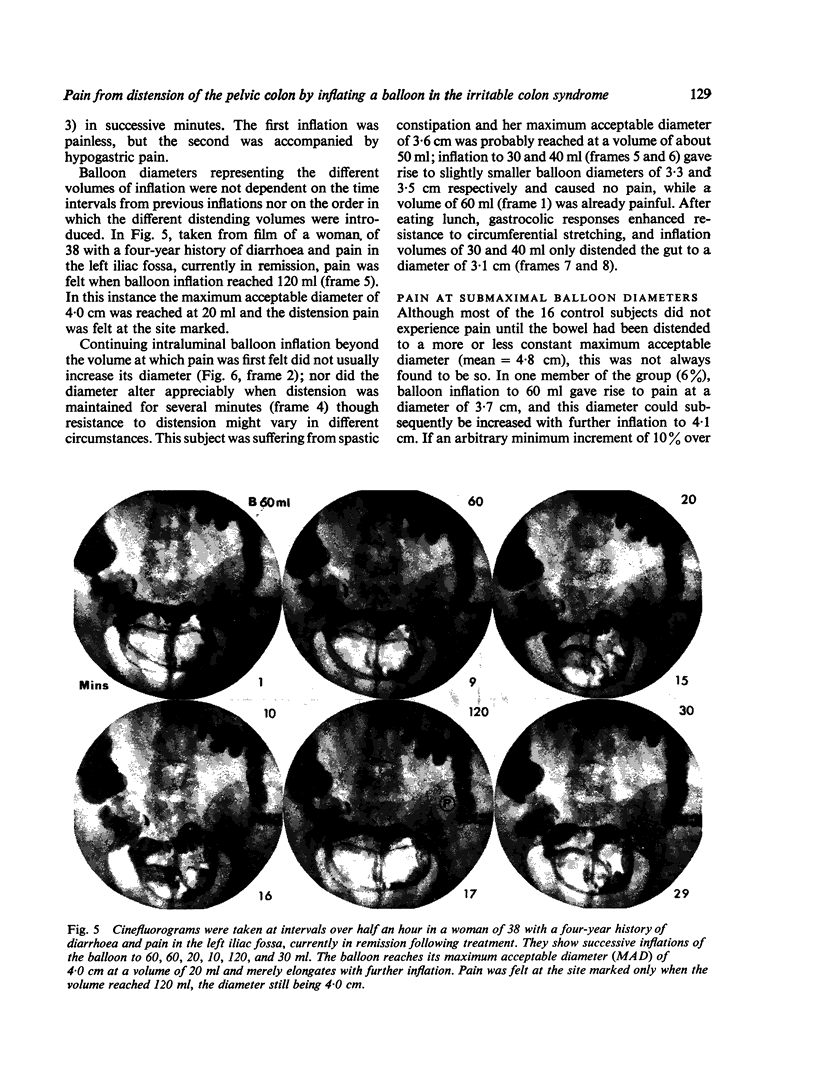
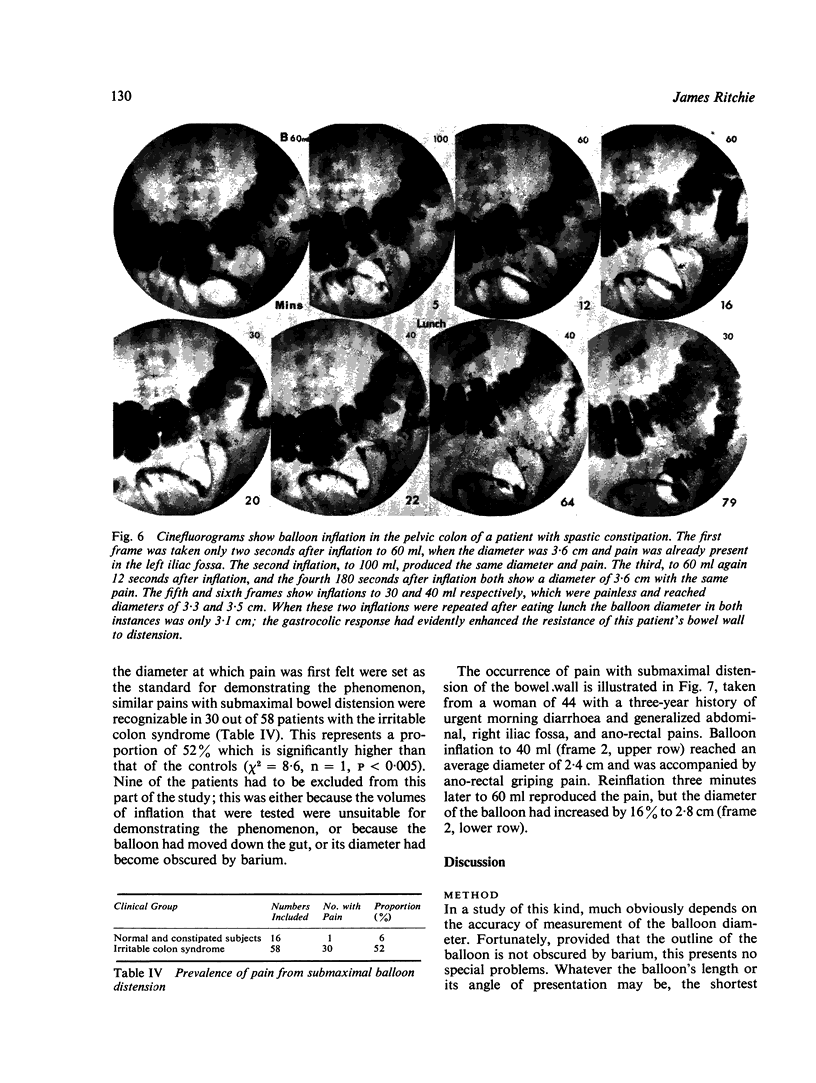
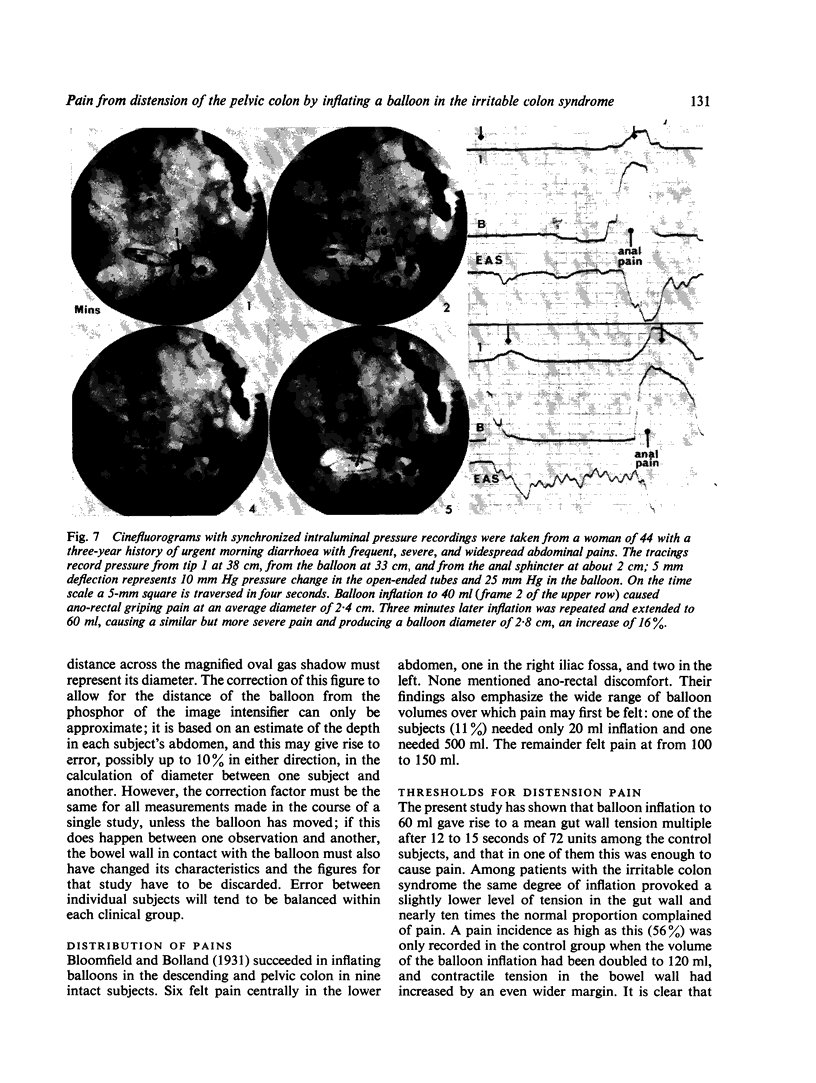
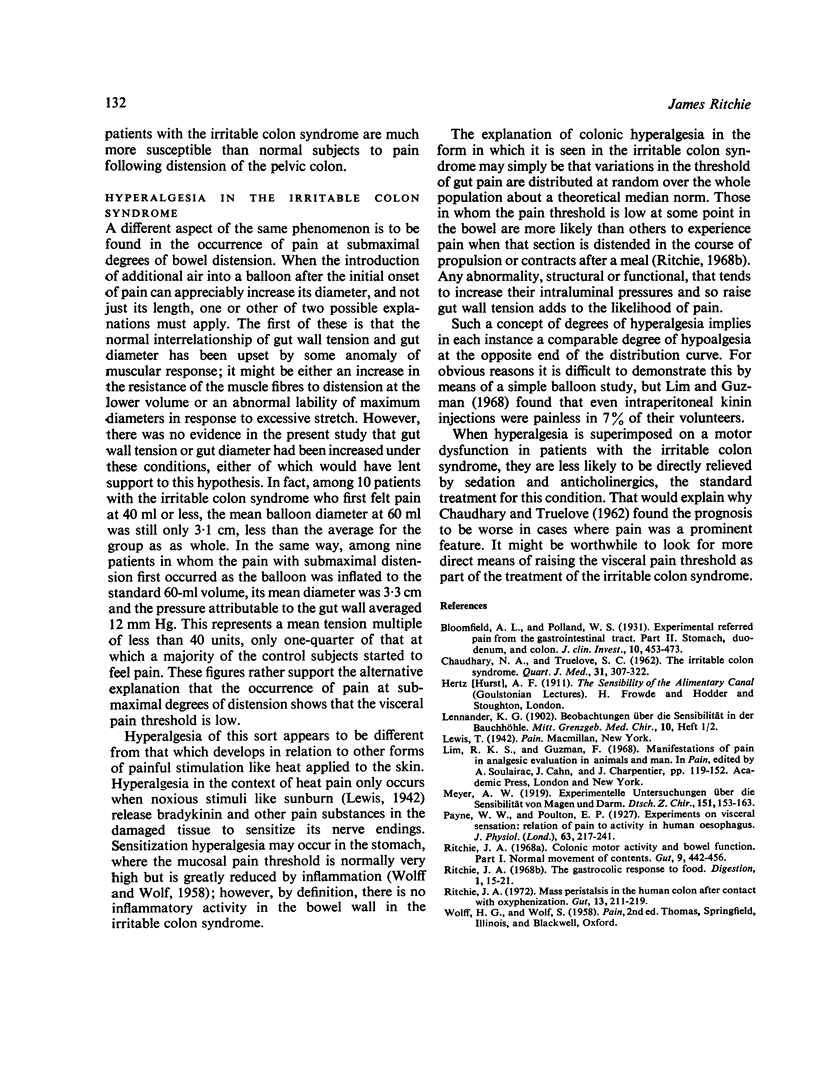
Images in this article
Selected References
These references are in PubMed. This may not be the complete list of references from this article.
- Bloomfield A. L., Polland W. S. EXPERIMENTAL REFERRED PAIN FROM THE GASTRO-INTESTINAL TRACT. PART II. STOMACH, DUODENUM AND COLON. J Clin Invest. 1931 Aug;10(3):453–473. doi: 10.1172/JCI100364. [DOI] [PMC free article] [PubMed] [Google Scholar]
- CHAUDHARY N. A., TRUELOVE S. C. The irritable colon syndrome. A study of the clinical features, predisposing causes, and prognosis in 130 cases. Q J Med. 1962 Jul;31:307–322. [PubMed] [Google Scholar]
- Payne W. W., Poulton E. P. Experiments on visceral sensation: Part I. The relation of pain to activity in the oesophagus. J Physiol. 1927 Aug 8;63(3):217–241. doi: 10.1113/jphysiol.1927.sp002399. [DOI] [PMC free article] [PubMed] [Google Scholar]
- Ritchie J. A. Colonic motor activity and bowel function. I. Normal movement of contents. Gut. 1968 Aug;9(4):442–456. doi: 10.1136/gut.9.4.442. [DOI] [PMC free article] [PubMed] [Google Scholar]
- Ritchie J. A. The gastrocolic response to food. Digestion. 1968;1(1):15–21. doi: 10.1159/000196827. [DOI] [PubMed] [Google Scholar]
- Ritchie J. Mass peristalsis in the human colon after contact with oxyphenisatin. Gut. 1972 Mar;13(3):211–219. doi: 10.1136/gut.13.3.211. [DOI] [PMC free article] [PubMed] [Google Scholar]






